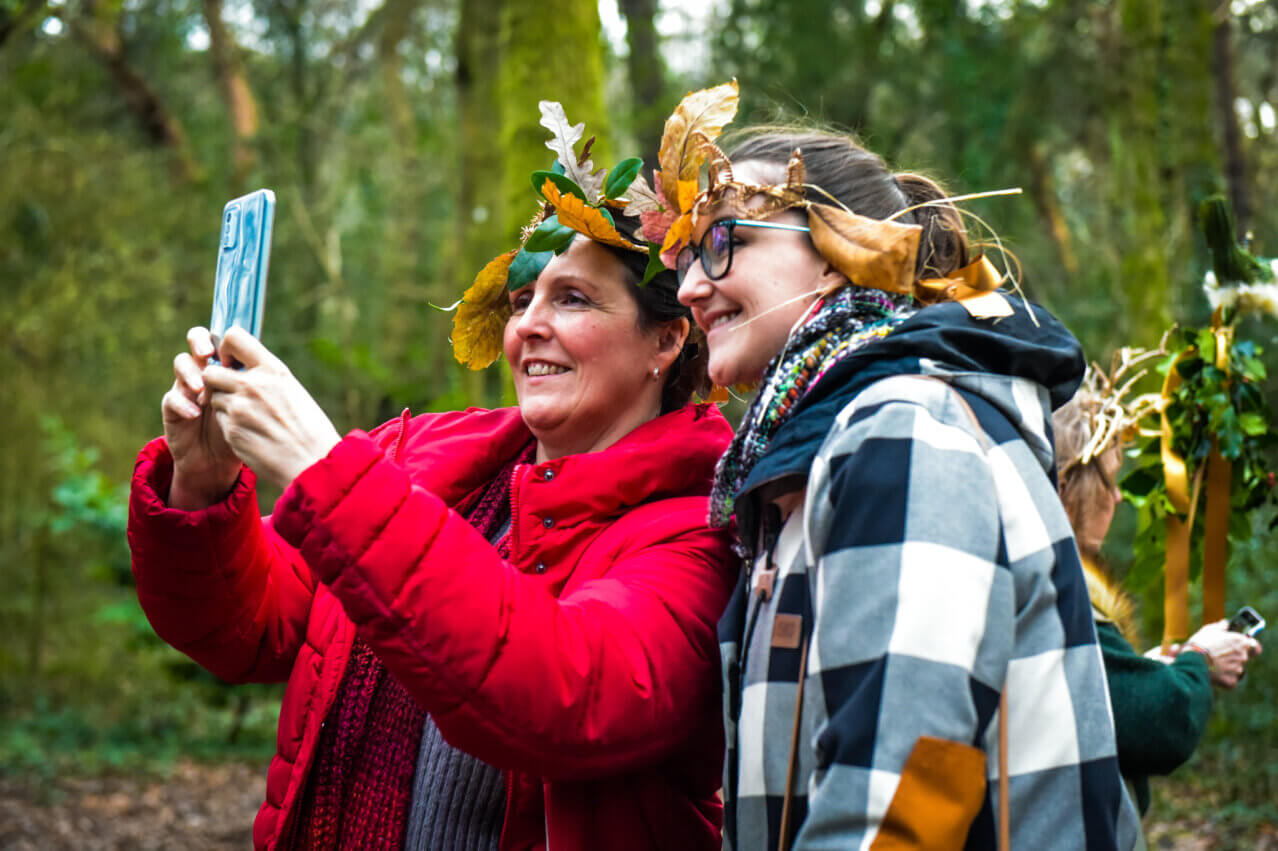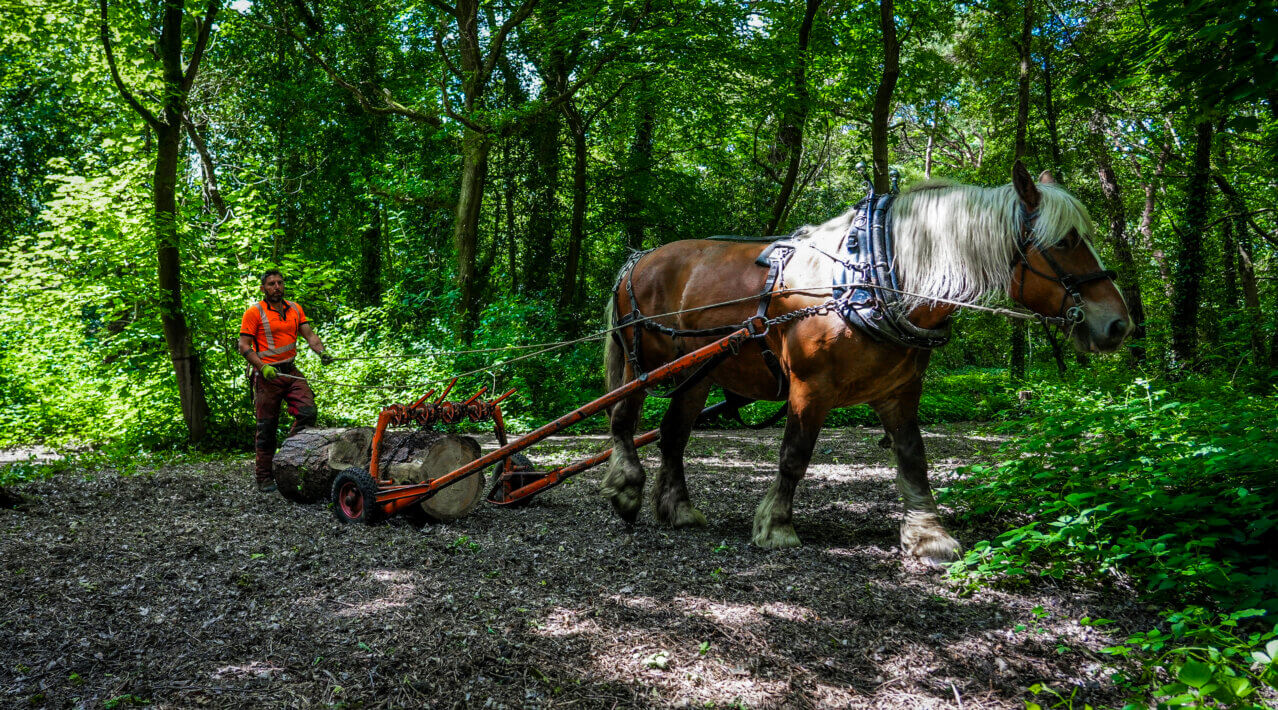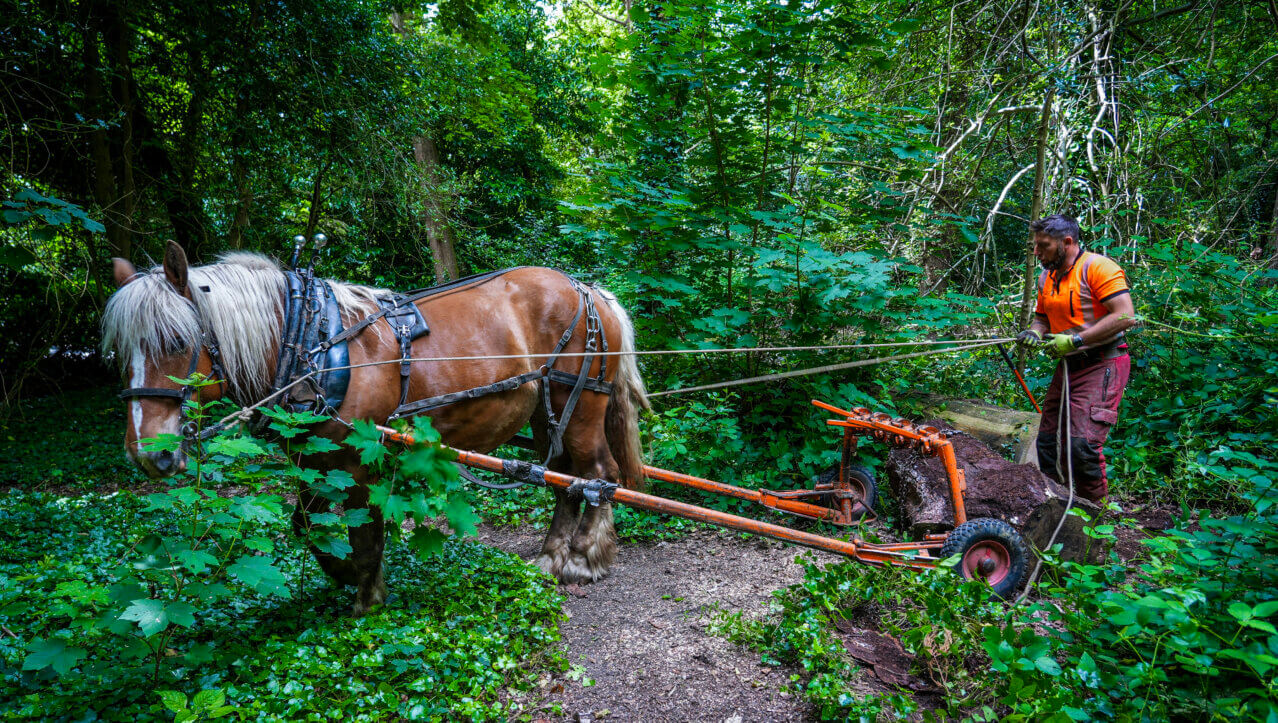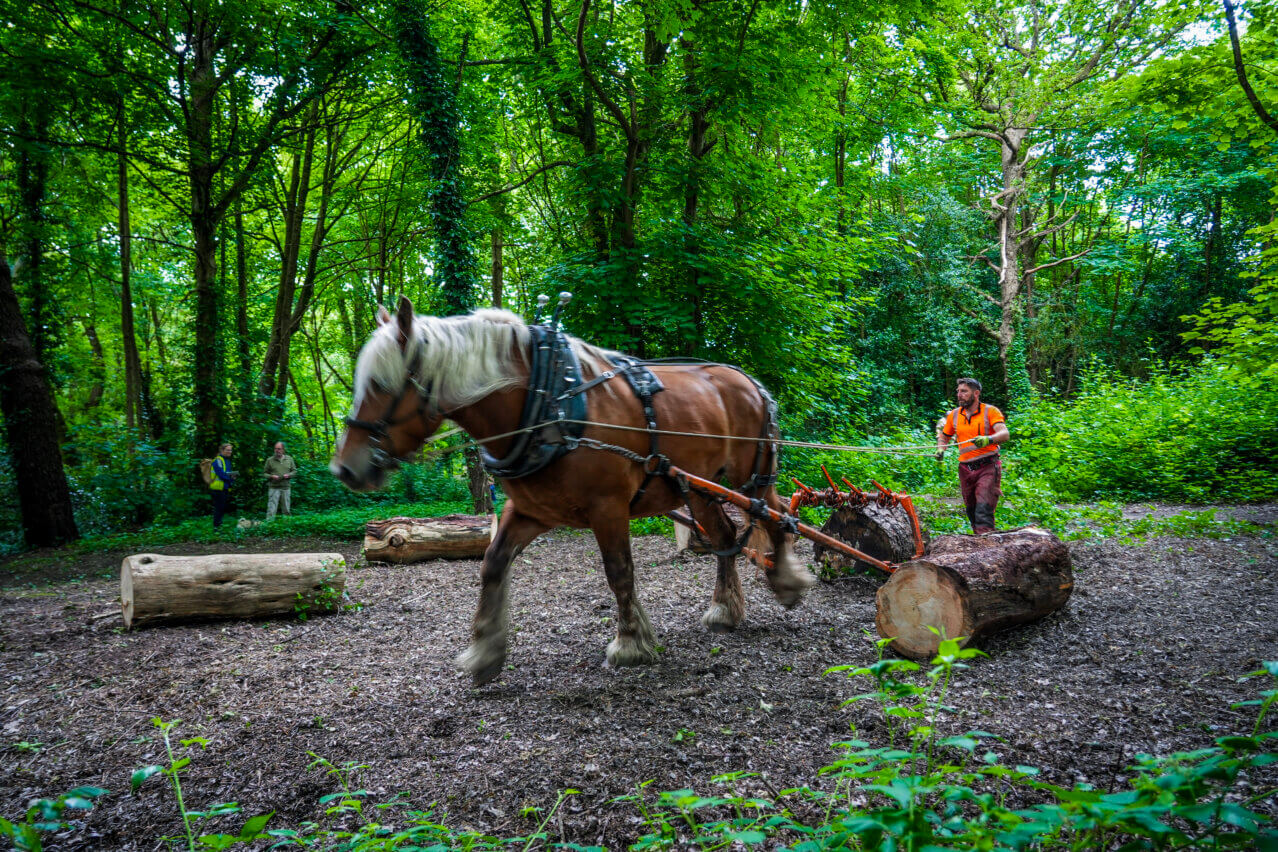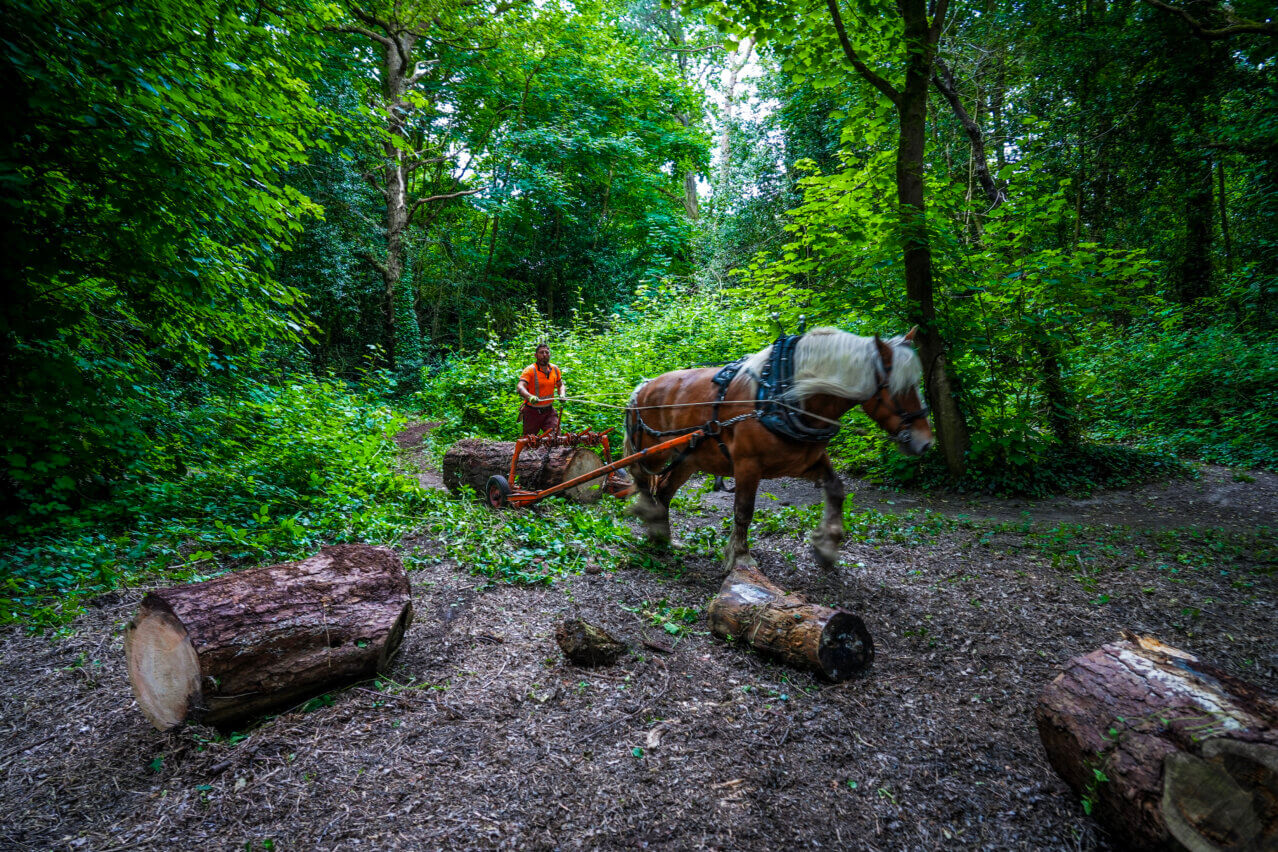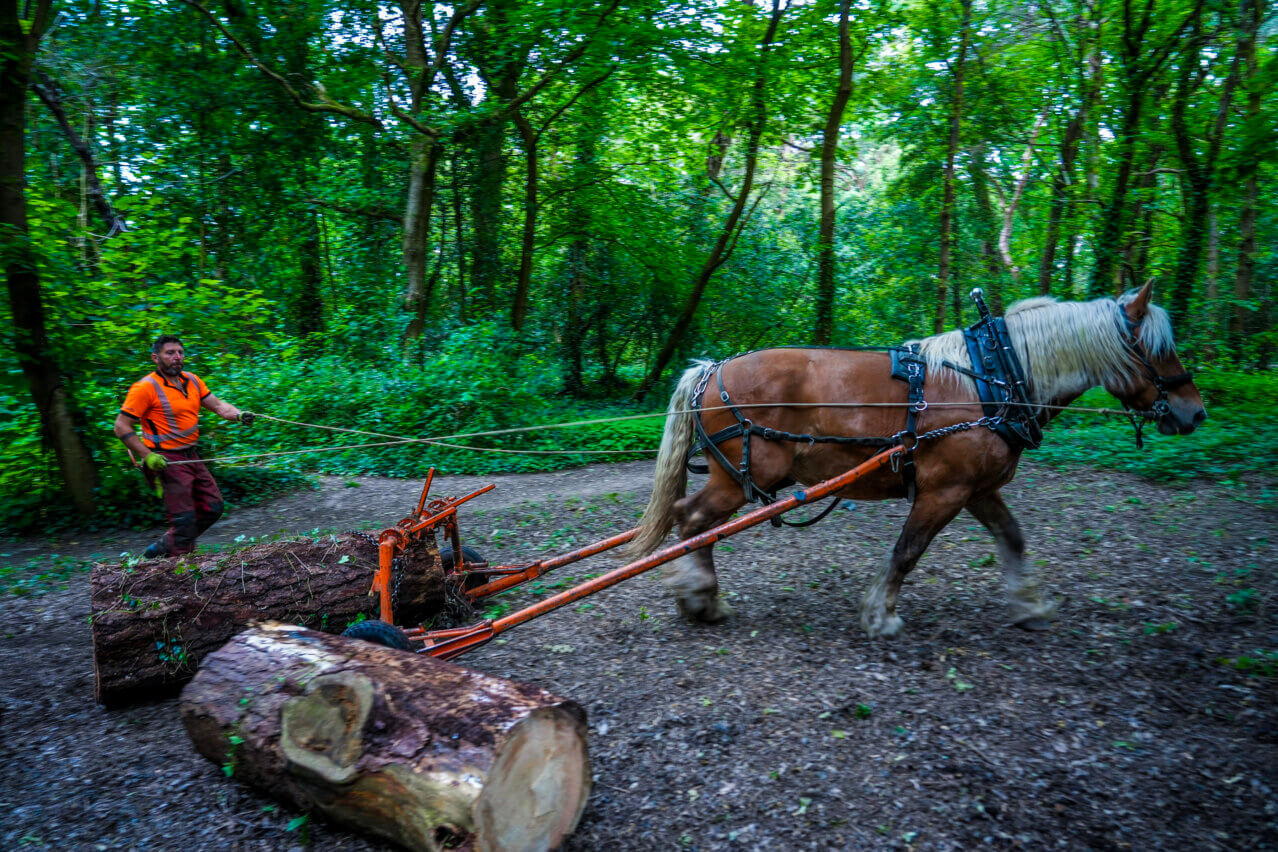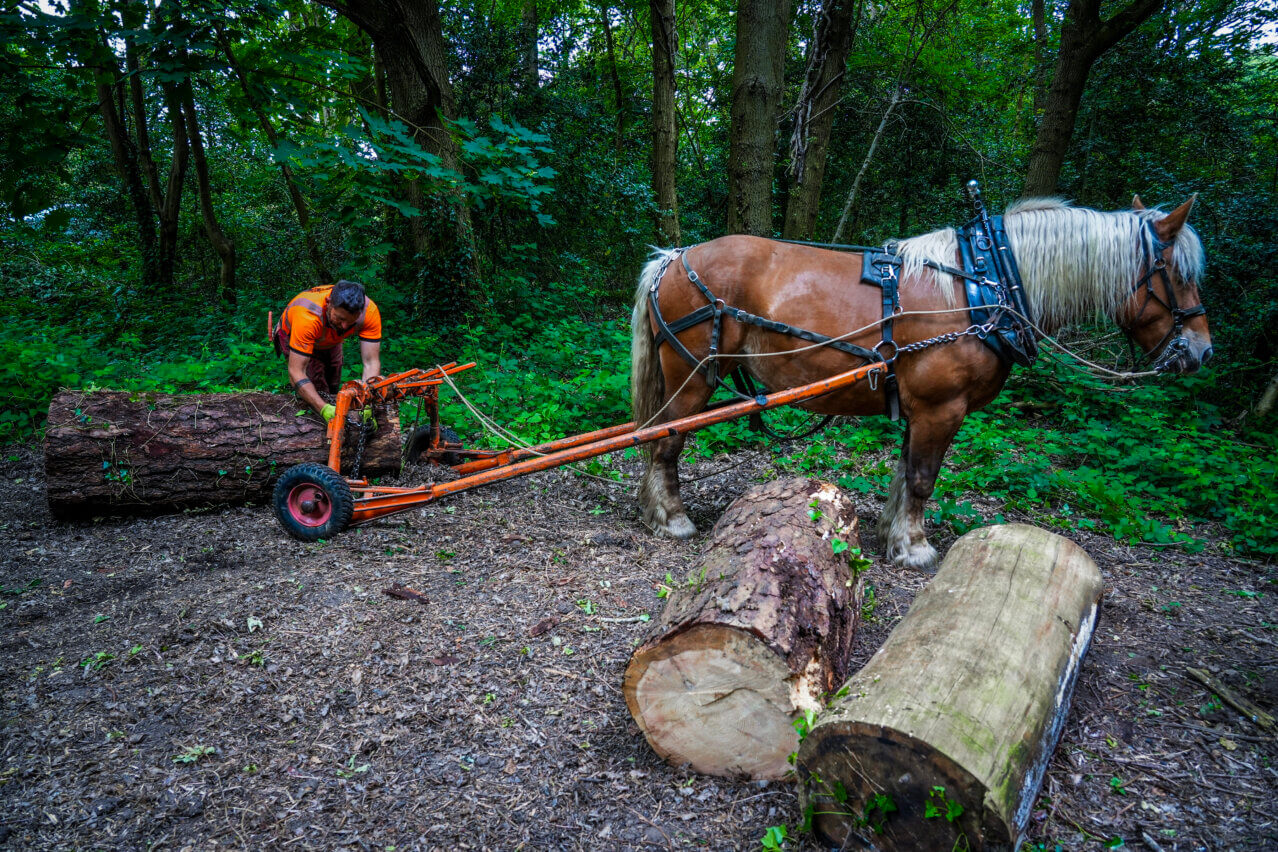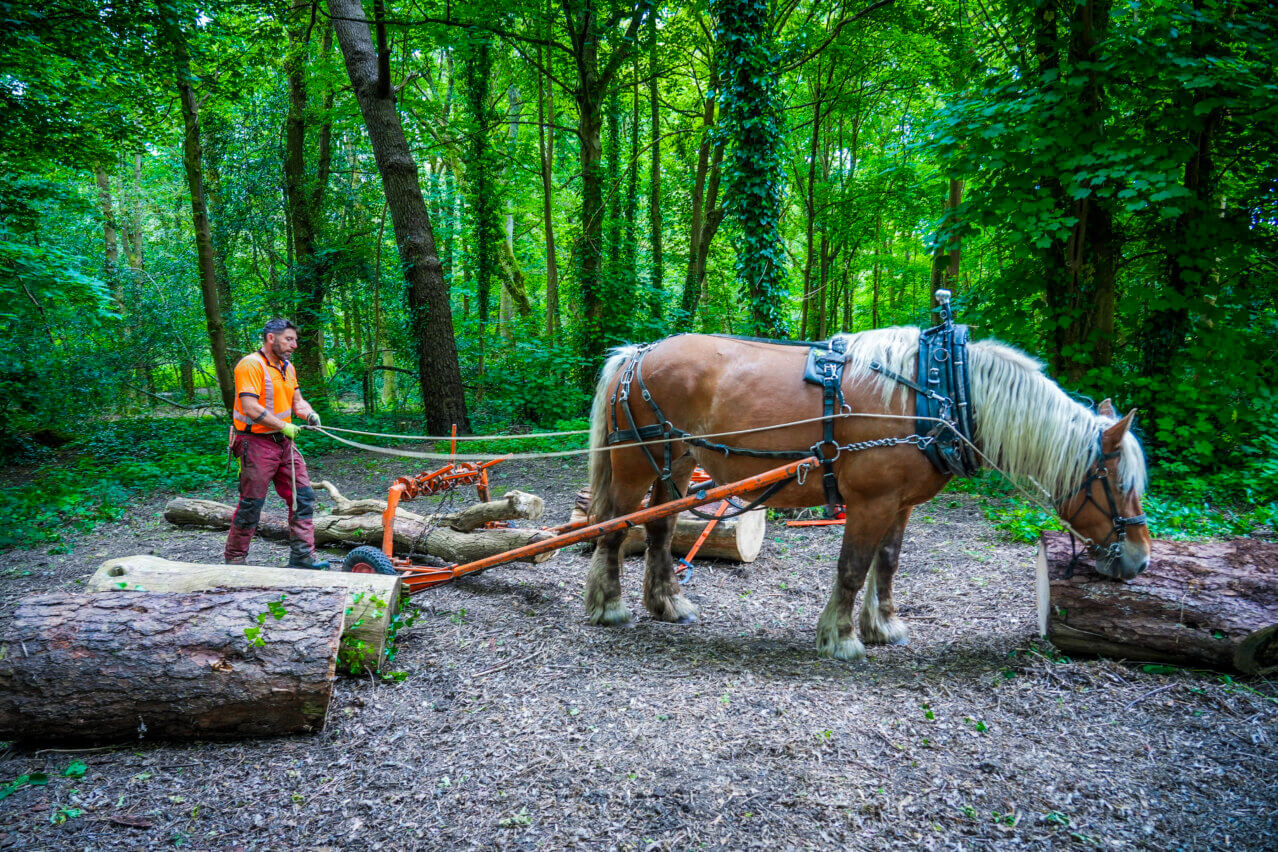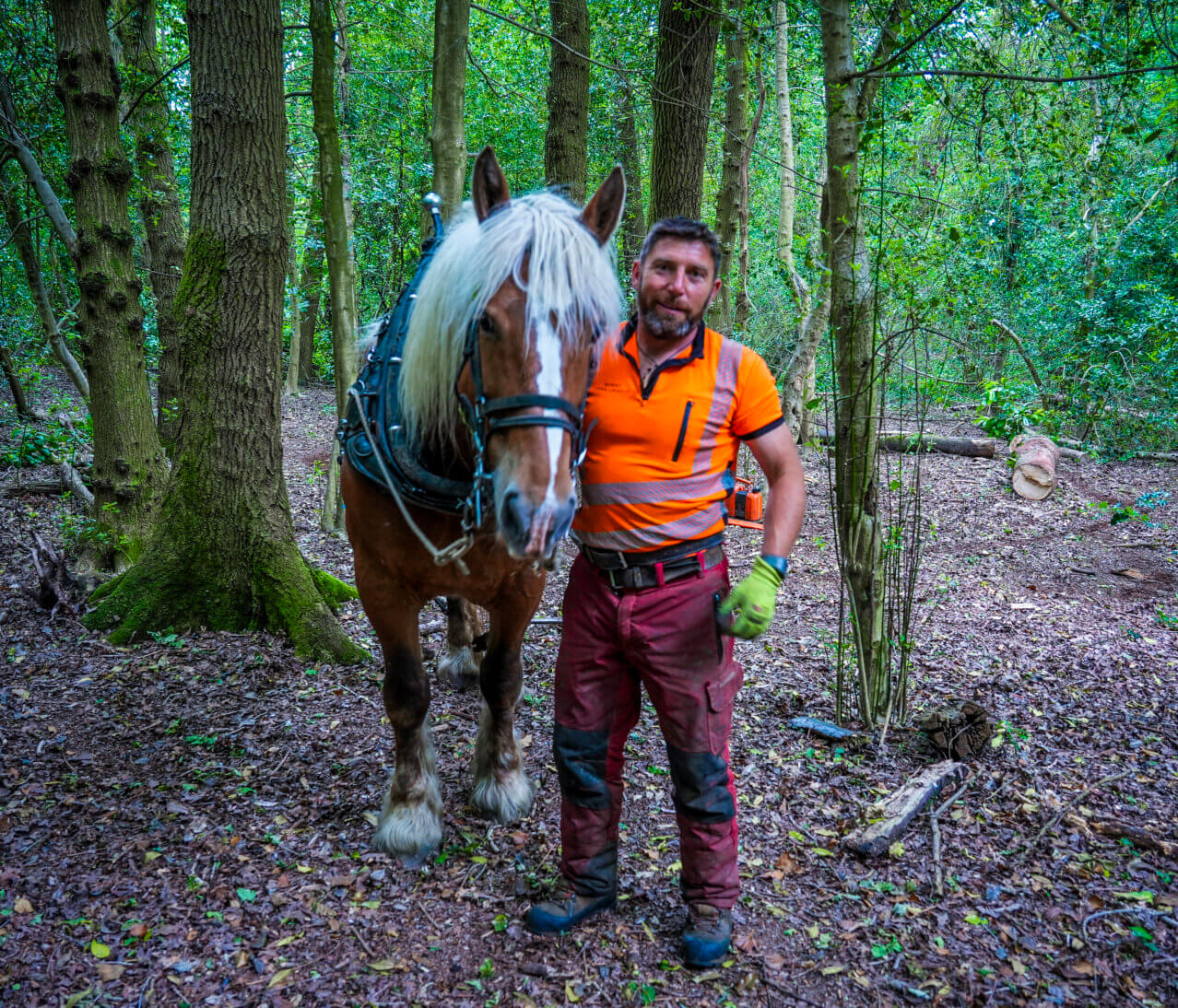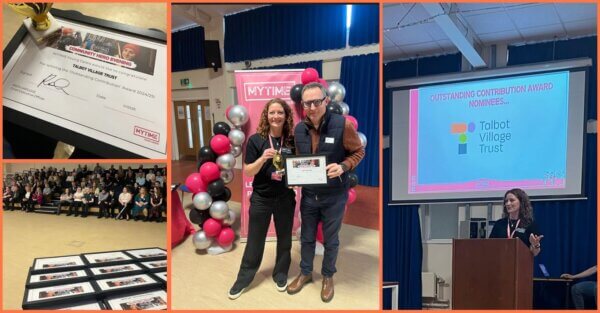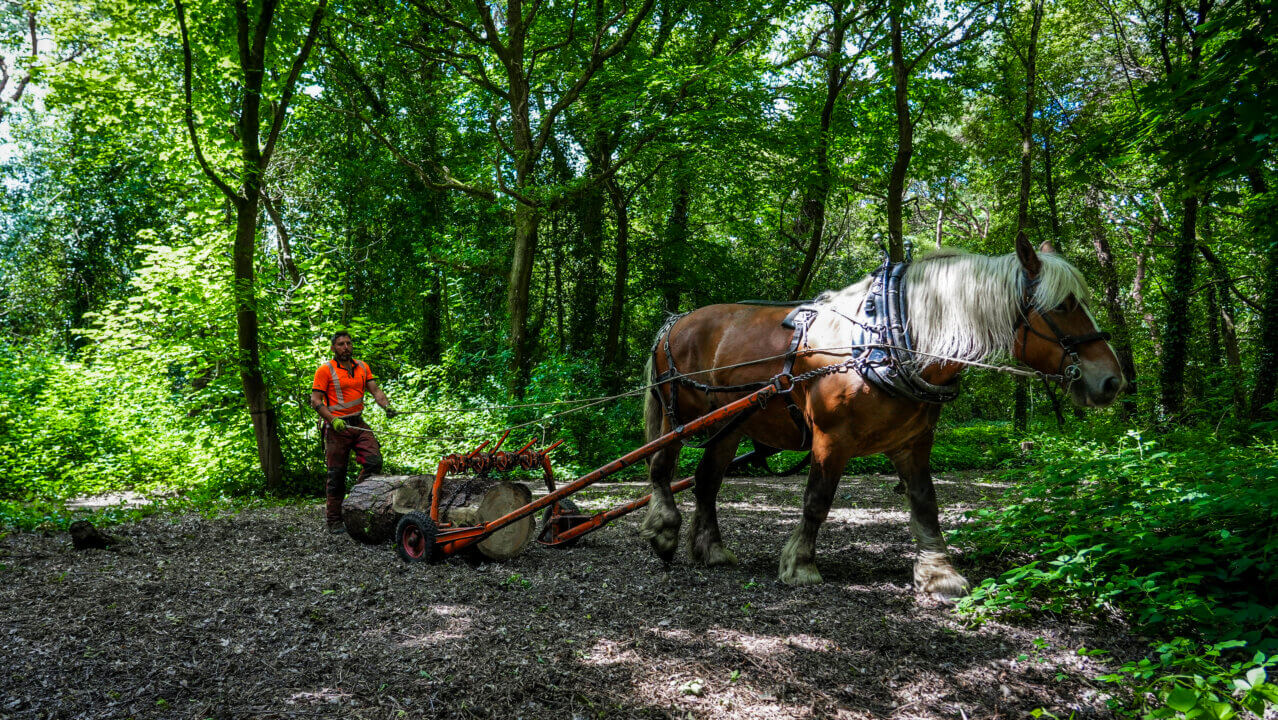

Woodsman Toby Hoad brought his Comtois craft horses to Talbot Village to help move logs at Talbot woodlands.
Last winter, extensive maintenance works were undertaken in Talbot woodland, including the thinning of the middle storey and removal of invasive vegetation to bring additional light to the ground. Following this, Dorset Horse Logging joined us recently to rearrange the resulting tree trunks, creating informal seating for all woodland users to enjoy this tranquil area.
On Wednesday, June 12, woodsman Toby Hoad, of Dorset Horse Logging, attended the site with his two Comtois draft horses, Celine and Etty. The event invited much attention, with many passers-by stopping to admire them at work. Locally based Longspee Academy visited with a group of their students who stood watching in awe. Toby paused to explain the process to them, sharing some of the techniques he uses, and details of his own inspiring career path.
Martha Searle, Community and Engagement Lead at Talbot Village Trust, expressed her enthusiasm: “We’re so pleased to welcome Toby and his horses to our woodlands here at Talbot Village. Aside from being a traditional practice, horse logging is low impact, reducing pollution and aiding natural regeneration. It’s been great to meet so many members of the public through this work, celebrating these less polluting forms of woodland management.”
Toby Hoad’s four Comtois draft horses, based at Corfe Castle, have previously participated in similar work for organisations like the National Trust, RSPB, New Forest National Parks Authority, and Dorset Wildlife Trust. The low-impact, low-pollution practice of horse logging dates back to a pre-industrialised world when horses were used to extract timber, bracken, and vegetation. Today, this method helps protect natural environments, reduce machinery use, and reach hard-to-access woodland areas with minimal impact.
Toby shared, “It’s been wonderful to work the land here at Talbot Village and bring a traditional practice like horse logging back into modern view. Over the years, the use of horses for this kind of work has been reintroduced for a variety of reasons, mainly for the minimal impact on the environment. Horses can access areas traditionally difficult for machinery, and as they work they scarify the ground underfoot, creating an ideal seed bed for natural woodland regeneration. I also enjoy telling passers-by and young people about the importance of this work to the ecosystem.”
This work is part of the Trust’s wider estate management plans and conservation efforts. Information on the planned forest school activities and other upcoming events will be available through our website.
